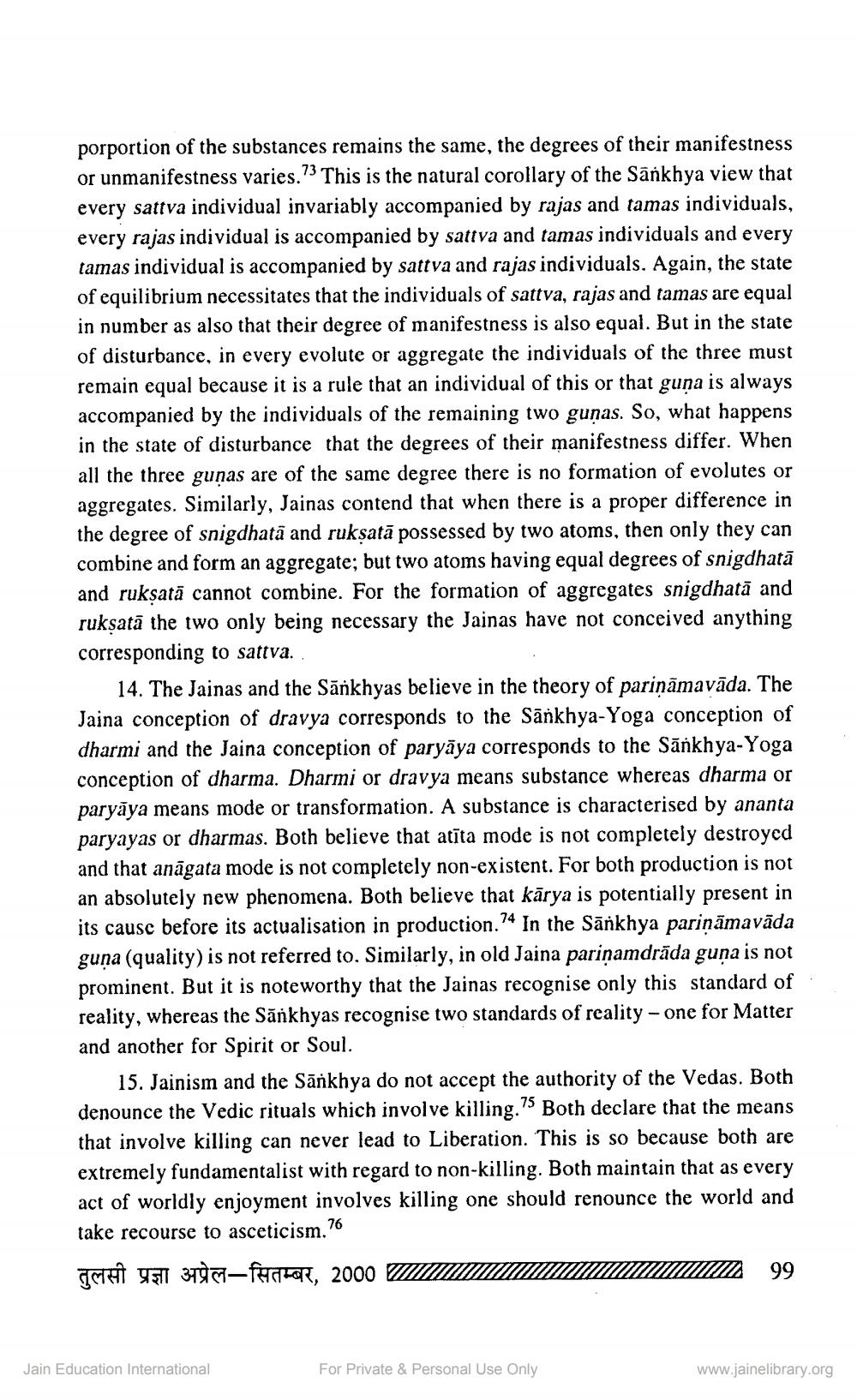________________
porportion of the substances remains the same, the degrees of their manifestness or unmanifestness varies." This is the natural corollary of the Sānkhya view that every sattva individual invariably accompanied by rajas and tamas individuals, every rajas individual is accompanied by sattva and tamas individuals and every tamas individual is accompanied by sattva and rajas individuals. Again, the state of equilibrium necessitates that the individuals of sattva, rajas and tamas are equal in number as also that their degree of manifestness is also equal. But in the state of disturbance, in every evolute or aggregate the individuals of the three must remain equal because it is a rule that an individual of this or that guna is always accompanied by the individuals of the remaining two guņas. So, what happens in the state of disturbance that the degrees of their manifestness differ. When all the three gunas are of the same degree there is no formation of evolutes or aggregates. Similarly, Jainas contend that when there is a proper difference in the degree of snigdhatā and ruksatā possessed by two atoms, then only they can combine and form an aggregate; but two atoms having equal degrees of snigdhatā and ruksatä cannot combine. For the formation of aggregates snigdhatā and ruksatā the two only being necessary the Jainas have not conceived anything corresponding to sattva.
14. The Jainas and the Sārkhyas believe in the theory of pariņāmavāda. The Jaina conception of dravya corresponds to the Sārkhya-Yoga conception of dharmi and the Jaina conception of paryāya corresponds to the Sānkhya-Yoga conception of dharma. Dharmi or dravya means substance whereas dharma or paryāya means mode or transformation. A substance is characterised by ananta paryayas or dharmas. Both believe that atīta mode is not completely destroyed and that anāgata mode is not completely non-existent. For both production is not an absolutely new phenomena. Both believe that kārya is potentially present in its causc before its actualisation in production. In the Sānkhya pariņāmavāda guna (quality) is not referred to. Similarly, in old Jaina pariņamdrāda guna is not prominent. But it is noteworthy that the Jainas recognise only this standard of reality, whereas the Sănkhyas recognise two standards of reality - one for Matter and another for Spirit or Soul.
15. Jainism and the Sānkhya do not accept the authority of the Vedas. Both denounce the Vedic rituals which involve killing. Both declare tha that involve killing can never lead to Liberation. This is so because both are extremely fundamentalist with regard to non-killing. Both maintain that as every act of worldly enjoyment involves killing one should renounce the world and take recourse to asceticism." GEHT 9511 300 finkar, 2000 M M
99
Jain Education International
For Private & Personal Use Only
www.jainelibrary.org




